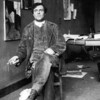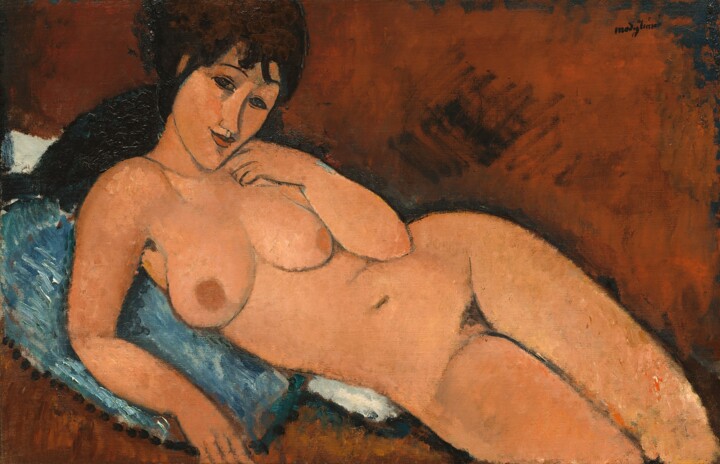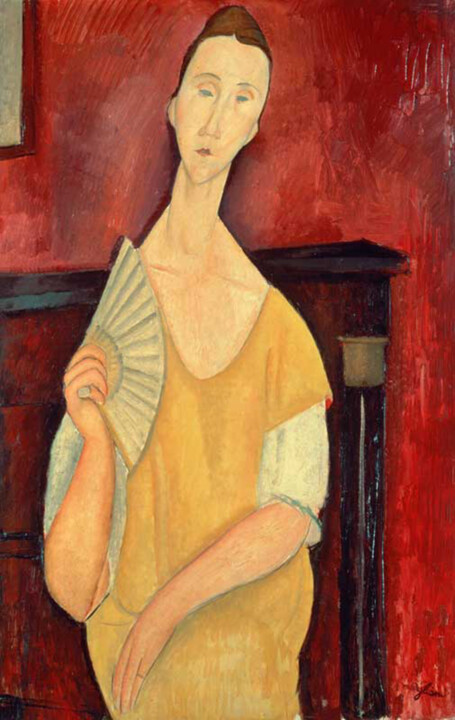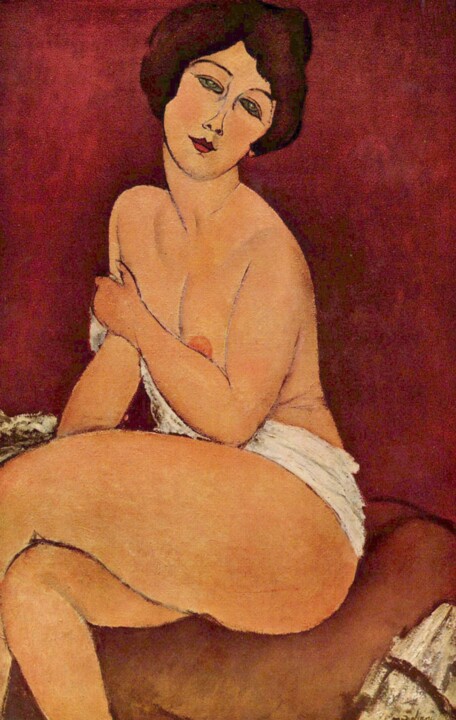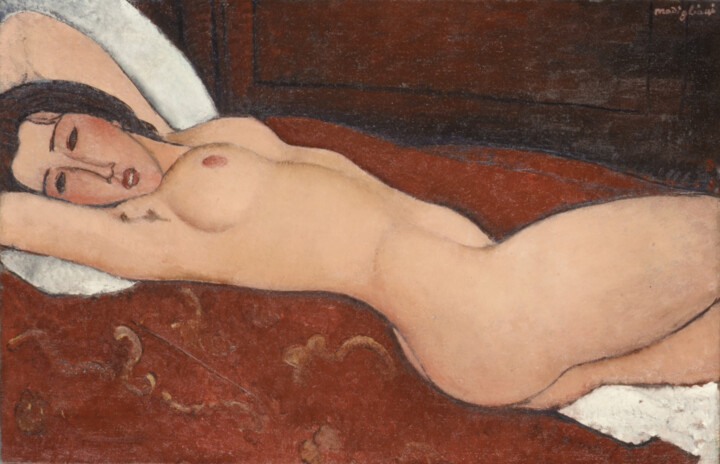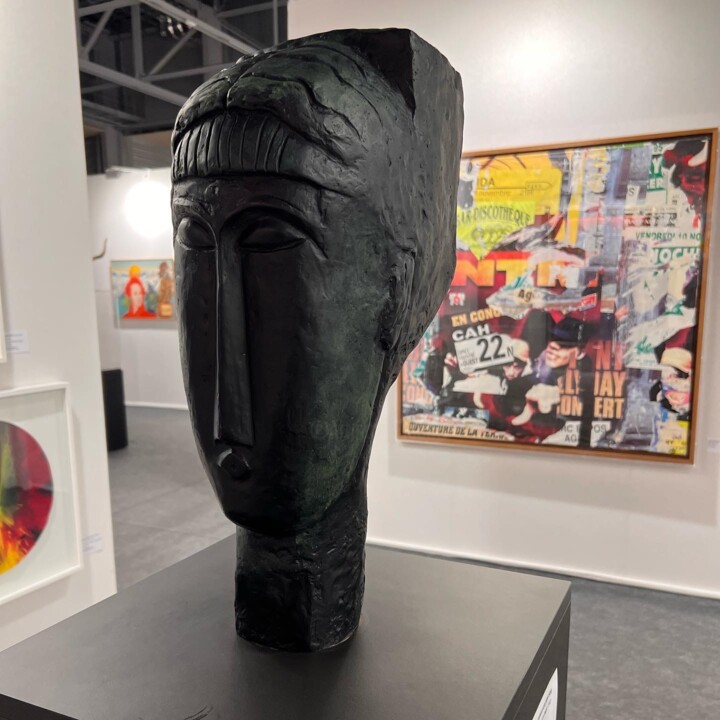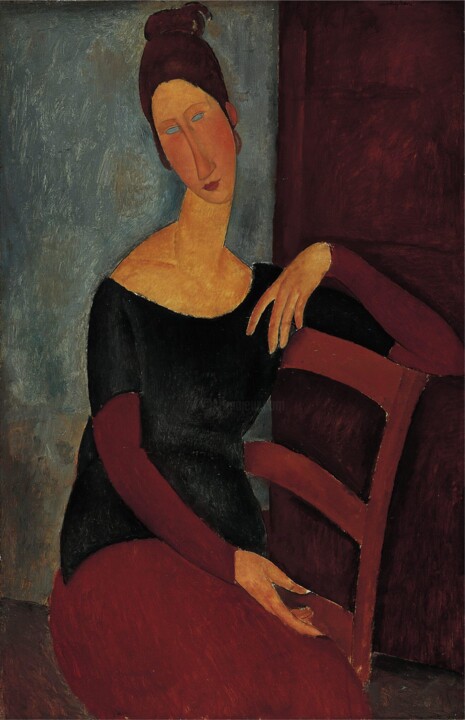Who was Amedeo Modigliani?
Modigliani was a key member of the École de Paris, and he brought the portrait and the naked body into the modern age. Modigliani's portraits have a sense of melancholy, long proportions, and mask-like faces that were influenced by Constantin Brancusi and African art. They are both specific and highly stylized, with each one showing a different part of the sitter's inner life while still being unmistakably "Modiglianiized". People were shocked by Modigliani's naked paintings because they showed things like pubic hair and were openly sexual. Modigliani's tragic and bohemian life has been the subject of three biopics. His fragile health, which he had since he was a child, his constant poverty, and, most famously, his over-the-top, self-destructive lifestyle, which included sexual debauchery and too much drug and alcohol use, are all part of his legacy.

Amedeo Modigliani, Portrait of Chaïm Soutine, 1916. oil on canvas, 100 x 65 cm. Private collection.
Chaïm Soutine, 1916
A young man is sitting with his hands on his legs and facing forward. His eyes are turned to the left, and he seems to be thinking about something long ago. He has combed and arranged his long, dark hair, leaving only a small wisp on the left side of his forehead. She has full lips and pink cheeks. Lastly, she wears an ochre-colored wide-buttoned coat. There are no details in the dark background. In the painting, Cham Soutine, who was also a member of the Paris School and a friend of Modigliani's, is shown.
Style of the work
Amedeo Modigliani was a member of the École de Paris, which was a group of artists in Paris between 1900 and 1920. We can see in the painting what made the artist's paintings so well-known. In fact, the friend's shape is stretched out and made very simple. Dark lines outline the shapes, and two-dimensional backgrounds are used to color them. But his characters' faces don't yet have the usual empty eyes that give them a mysterious look. The Portrait of Soutine is made with a mix of oil colors that are spread out on a canvas that is 100 cm by 65 cm.

Who was the man effigyed?
Soutine was born on January 13, 1893, in a small town near Minsk called Smilovii. At the time, it was part of Czarist Russia, but it is now in Belarus.His later works would be influenced by the hard times he had as a child, when he was part of a poor, large, and socially isolated Jewish family. In 1909, Soutine went to art school in Minsk. He then spent three years at the Vilnius Academy of Art, starting in 1910.
During those years, he met painters Pinchus Kremegne and Michel Kikoine. In 1913, he moved to Paris, France, with them. There, he met some of the most famous artists of the time, like Marc Chagall, Fernand Léger, and Amedeo Modigliani, and became close friends with them. In Paris, he was also known for his extravagance. For example, he once kept some dead animals in his studio so he could paint them. His neighbors called the police because the smell was so bad, and Soutine tried in vain to explain that art was more important than cleanliness. Starting in 1918, Soutine moved back and forth between Paris and other parts of France, especially the Mediterranean and Pyrenees regions.
During these years, he painted still lifes, portraits, and landscapes, but mostly landscapes that made him feel sad and had bright, lyrical shots. These were some of the first works that collectors were interested in, which gave him some financial security.
Then, he made a series of paintings of pastry chefs, valets, and altar boys that were very realistic from a psychological point of view. His style is partly influenced by past masters like El Greco, Diego Velázquez, Rembrandt, and Gustave Courbet, as well as by great artists from his own time like Paul Cézanne, Vincent van Gogh, and Pierre Bonnard. But he has the most in common with Edvard Munch, James Ensor, Emil Nolde, Oskar Kokoschka, and the Expressionism movement because of the way he has always shown reality as an inner tragedy.
Soutine never officially joined any artistic movement because he was too individualistic. However, because of his passionate use of bright colors, he is seen as one of the most important artists of expressionism. His work was based on a very personal vision and painting style. His style was especially important to the Austrian Expressionists and the Cobra group painters (especially Karel Appel), Willem de Kooning, and Francis Bacon after World War II.
From 1930 until he died, Soutine was always restless and troubled, despite his success. He rarely showed his works and tried to go deeper into his existential and formal research, with even dramatic results: obsessed with form and color, he destroyed many of his works when he was depressed or unhappy.
During World War II, the Nazi army invaded France. Since Soutine was a Jew, he had to leave Paris and hide in the countryside to avoid being caught by the Gestapo. During this time, he moved from place to place all the time and sometimes had to hide in the woods and sleep outside. This way of life gave him a very bad stomach ulcer, which sent him back to Paris for surgery, but it wasn't enough to save his life.
Soutine died in Paris on August 9, 1943, and was buried in the Montparnasse Cemetery. The Atelier where Soutine lived and worked at the Cité Falguière in Montparnasse was bought by Antoine Rohal, a student of Antoine Bourdelle and a sculptor. Rohal kept the Atelier in its original state until his death in 1977.
What was the relationship between Amedeo and Chaïm? How was this captured by the painting?
Portrait of Chaim Soutine is not just a portrait; it is also a real record of the painter's life in Paris and the people he knew there. Chaim Soutine (1894–1943) was the 11th son of a Jewish tailor in Russia. A rabbi saw that he was talented and sent him to art school, first in Minsk and then in Vilna. Soutine moved to Paris when she was 17 and met Modigliani around 1914 in Montparnasse.
Soon, they became very close friends, and Modigliani painted several portraits of the young man. Soutine didn't have any rules about how he painted, and he did things on the spot. This was very different from Amedeo. In fact, when he was drunk, the Leghorn artist said, "Everything dances around me like it's a Soutine landscape." The smooth Modigliani looked out for the rough Soutine, who was 10 years younger than him. In 1916, he told his dealer, Leopold Zborowski, about the young artist and asked him to help him. Many of Modigliani's portraits are stylized, almost cartoonish, and have blank eyes, but in this painting, things are different. Everything seems to show how much the artist likes Chaim.
The boy is sitting in front of us with messy hair and clothes. His hands are in his lap in an awkward way. His nose is wide and his eyes are looking out of the picture. One eye is a little higher than the other, and both have pupils. It's a picture of a young artist who is broke and maybe a little bit desperate. As a poor artist living in Paris, Modigliani could relate to some of these things. But above all else, we can say that this portrait shows how special Soutine was to Amedeo when he was older.

Amedeo Modigliani, Portrait of Chaïm Soutine near a table, 1916. Oil on canvas, Oil on canvas 92 × 60 cm. Washington: National Gallery of Art.
4 Anecdotes as to why Soutine's personality fascinated Modigliani
1) difficult childhood
In 1893, Chaim Soutine was born to a poor Jewish family in what is now Belarus. He was the tenth of eleven children, and his family was very poor. His childhood was not easy. In fact, Jews were pushed out of Orthodox society and often lived in very dangerous conditions.
2) Particular tastes
Soutine and some of his friends moved to Paris in 1913. There he met other great painters of the time and devoted himself to painting portraits and still lifes. Because animals, now rotten still life models, smelled bad, Soutine often got into trouble with the law. He also painted portraits of people who worked in all kinds of jobs, depicting them with often alienated faces.
3) A difficult character
He was very proud of his work and always tried to do it perfectly. Even though he made enough money from his art to live comfortably, he was still very critical. Soutine often destroyed his work when he was depressed. Even though he is known as an expressionist painter because of the way he uses color and shape in his work, he never joined any art movement.
4) The existential drama
His portraits are psychological representations, his still lifes show a universe of pain, blood, and especially the pain of the flesh (which will later inspire the works of Francis Bacon), and even his landscapes are echoes of his inner turmoil. So, Chaim Soutine should be remembered as a man who had a hard life, a perfectionist artist who was proud of his work, and a Jew who was persecuted from birth for no reason and out of hatred.



 Jean Dubreil
Jean Dubreil
